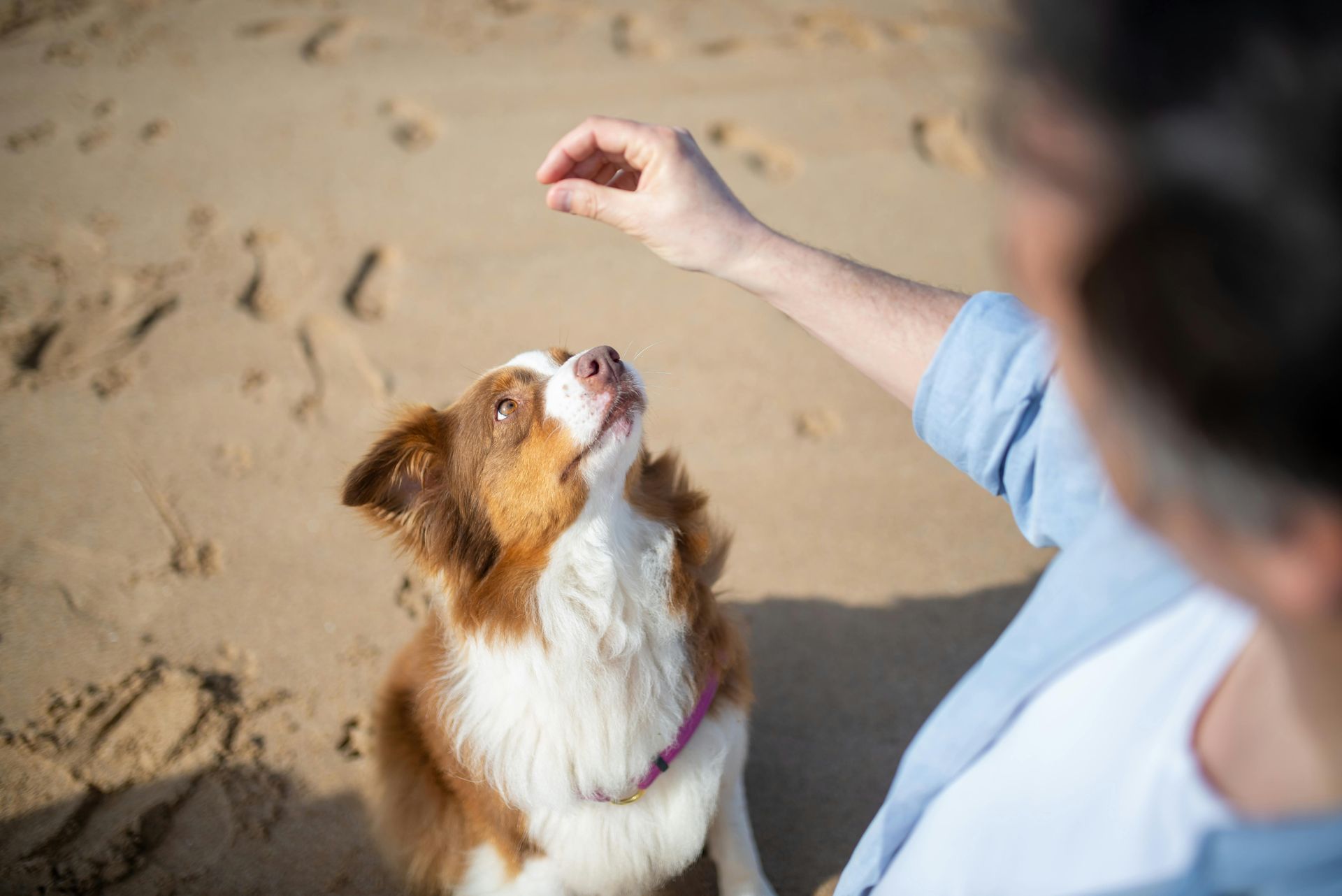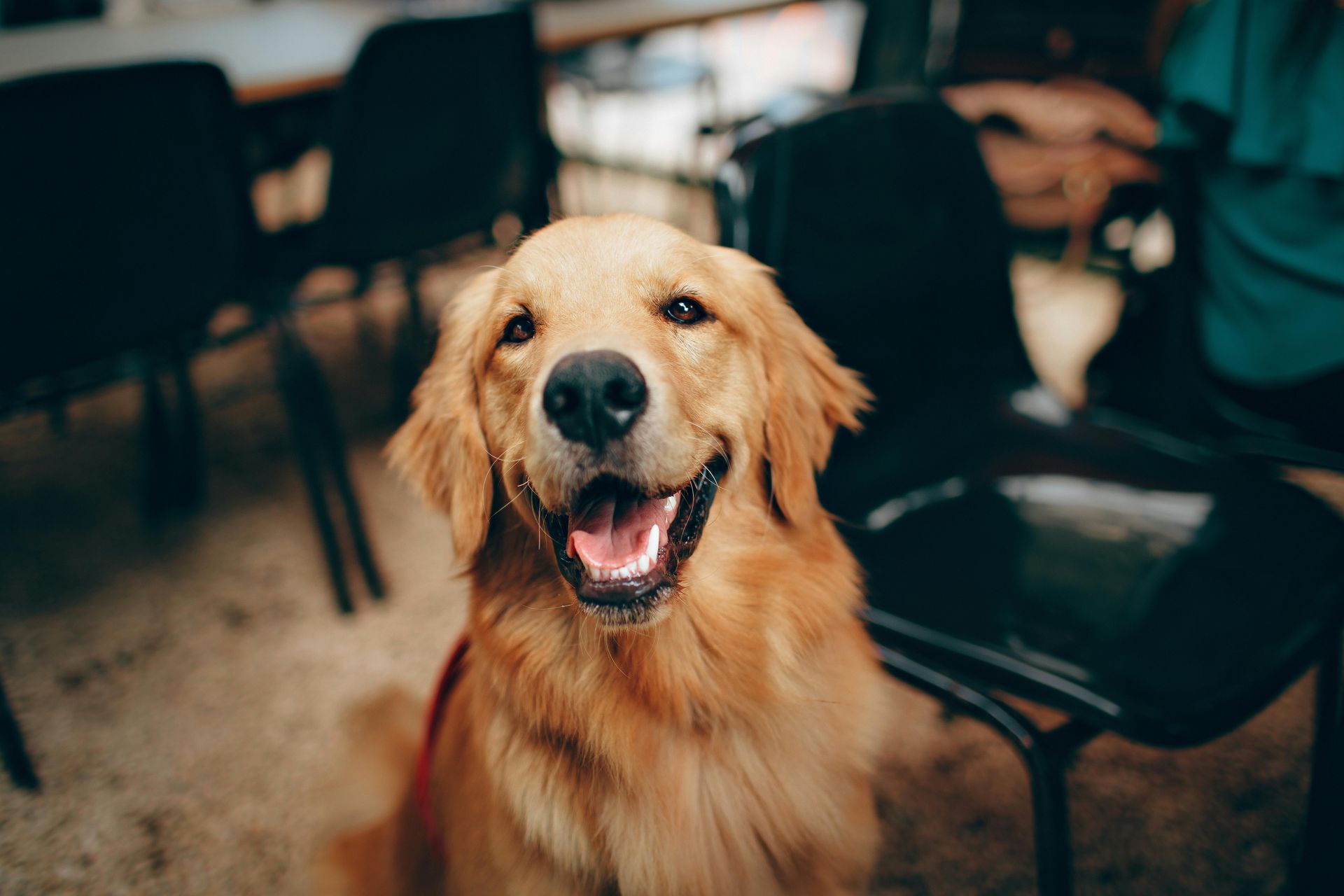By Michele McDermott
•
June 1, 2025
Ever seen a 6-month-old puppy ignore their owner at the dog park amid chaos? That owner wishes they'd started training weeks ago. The first few months with your puppy are crucial for a well-adjusted companion versus a chaotic pet. Effective training goes beyond commands; it builds neural pathways that shape how your dog perceives the world. Proper early training fosters trust and communication, preventing 90% of common issues. But many new puppy parents get it wrong… The Critical Window: Understanding Puppy Development The 8-16 Week Socialization Period From 8 to 16 weeks, your puppy's brain absorbs information like a sponge. This crucial window won't last long. During this time, puppies develop opinions on everything, including people and sounds. If you miss it, your dog may become fearful of things like skateboards or bearded men. Studies show that lack of socialization can lead to fear and aggression issues later. Conversely, puppies that experience positive interactions during this stage often grow into confident adults who view new things as exciting. Brain Development and Learning Capacity Puppies learn rapidly because their brains form connections quickly. They can absorb training effortlessly, similar to programming a computer while it’s still being built. Research indicates that appropriate mental stimulation leads to better problem-solving abilities as adults, making them smarter long-term. Creating Positive Neural Pathways When puppies learn, they form neural pathways in their brains. Building The Foundation: Essential Early Training Areas Potty Training Basics That Work Puppies don't instinctively know where to go. Training starts on day one with consistency and timing. Take your pup outside: - After waking up - After meals - After play - Before bedtime - Every 1-2 hours for young puppies Praise your puppy immediately after they eliminate outside, using a consistent phrase like "go potty." Accidents happen, so avoid punishment. Clean with enzymatic cleaners to eliminate scent and prevent repeat offenses. B. Crate Training for Security and Safety Your puppy's crate is their den, not a prison. Make it inviting with bedding and toys. Feed meals there and gradually extend crate time. Avoid using it for punishment. Start with brief periods at home and build up. A well-trained puppy: - Has fewer accidents - Stays safe alone - Travels easily - Feels secure during stress C. Basic Commands That Set Boundaries Training commands fosters communication: - Sit: Calms excited pups. - Stay: Teaches impulse control. - Come: Vital for danger situations. - Leave it: S tops trash and toxin ingestion. Keep sessions brief (5-10 minutes) and enjoyable, ending on a positive note. D. Socialization with People and Animals Your puppy's critical socialization window closes around 16 weeks. Missing it can lead to lasting fears. Introduce your puppy to: - Diverse children and adults - People in hats or uniforms - Different floor surfaces (tile, carpet, grass) - Other vaccinated pets - Various sounds (vacuum, doorbell, traffic) Quality counts more than quantity; ensure each experience is positive. E. Handling and Touch Tolerance Comfort with handling leads to an easier adult dog for grooming and vet visits. Daily touch practice: - Gently handle paws, ears, and tail - Check mouth and ears - Touch collar area - Briefly brush coat - Touch nails Use treats to create positive associations. Start with brief touches and gradually extend the duration. Your future vet will appreciate your dog's good behavior during exams thanks to these early lessons. Preventing Future Problems Through Early Training A. Addressing Behavioral Issues Early Puppy training is like building a house—get the foundation right, and everything else follows. Early training shapes your puppy's future behavior, as most serious adult dog problems stem from missed opportunities in their first months. Puppies learn constantly, whether you teach them or not. If you don’t guide their behavior, they’ll create their own rules, which you won't like. Early training helps redirect natural puppy instincts into suitable behaviors. Digging? Use a sandbox. Chewing? Provide appropriate toys to protect your furniture. B. Reducing Anxiety and Fear Puppies have fear periods where new experiences can imprint on them. Training during this time fosters confidence, so they face life's surprises calmly. If puppies aren't exposed to varied environments and people early on, they can become anxious adults, trembling during storms or panicking with guests. The key is pairing new experiences with positive outcomes: treats for the doorbell, rewards for the C. Preventing Resource Guarding Ever seen a dog growl over food or toys? That's resource guarding, which is easier to prevent than fix. Puppies instinctively protect valuable items, but training can avoid serious issues. Teach puppies early that hands near their belongings mean more good things. Practice daily: - Add treats to the bowl while they eat. - Trade toys for treats, then return the toy. - Touch their food, then add something tastier. These routines show that sharing leads to rewards, not loss. D. Establishing Bite Inhibition Puppies explore with their mouths, but sharp teeth can hurt! Bite inhibition—controlling mouth pressure—is essential for safety. This skill is best learned between 8-12 weeks. Puppies learn from littermates that biting hard stops play. Continue this lesson by: - Making a high-pitched "ouch!" sound. - Letting your hand go limp. - Briefly stopping Training Methods That Shape a Well-Balanced Dog Positive Reinforcement Techniques Dogs thrive on praise. When your puppy behaves well, celebrate! Positive reinforcement means rewarding good behavior with treats, affection, or verbal praise. This strategy encourages dogs to repeat rewarding actions. If your puppy sits on command, reward them and watch their progress. Positive reinforcement builds trust and makes training enjoyable instead of fearful. Avoid harsh corrections, as they can harm your bond. Redirect mistakes toward the correct behavior and reward that instead. Consistency and Routine Dogs need predictability. Training should occur at the same times daily using consistent commands. Everyone in the household must enforce the same rules to avoid confusion. Age-Appropriate Training Expectations Puppies don’t inherently know the rules; their brains develop in stages. From 8-10 weeks, focus on name recognition and basic socialization. At 10-12 weeks, introduce short sit/stay commands with sessions under 5 minutes. As puppies grow, gradually increase training complexity and duration The Long-Term Benefits of Early Training A. Stronger Human-Canine Bond Early puppy training builds the foundation of your relationship. By spending those initial months together, you communicate reliability and consistency, earning their trust. Owners who train early often report a deeper bond because communication is reciprocal; your puppy learns your expectations, and you understand their cues. This mutual understanding fosters a lasting connection. B. Improved Adaptability to New Situations Puppies trained early adapt better to life's challenges. Their young nervous systems are open to new experiences, boosting their confidence. Trained dogs typically exhibit less fear in unfamiliar situations, reduced anxiety during changes, better coping skills in stressful events, and increased comfort around new people and animals. A puppy who adapts early will handle routine changes with ease. C. Enhanced Quality of Life Early training benefits both you and your dog. A well-trained dog enjoys more freedom, joining you at cafés, on vacations, and on off-leash hikes. In contrast, untrained dogs may face restrictions, stuck in the house or yard due to trust issues. Training offers essential mental stimulation for puppies, preventing boredom and destructive behaviors. Puppies that learn to solve puzzles and respond to commands build a lifelong love of learning. D. Reduced Surrender and Rehoming Rates Behavior problems are the leading cause of dogs ending up in shelters, many of which could be avoided with early training. Issues like jumping, excessive barking, or aggression often lead to lost homes, stemming from unchanneled instincts. Training provides puppies with outlets for their natural behaviors, teaching impulse control and boundaries. Trained dogs are less likely to be surrendered, so early training is a commitment to a lifelong relationship. Raising a well-behaved dog starts in the early months when puppies are most receptive to learning. By understanding developmental stages and using positive reinforcement, you're not just teaching commands but preventing future behavioral issues. Your investment during this crucial time creates a confident, sociable companion. Your efforts today shape the dog you'll live with for years. Teaching obedience, social skills, and house manners through positive interactions helps your puppy grow into a balanced adult. Start training early, stay consistent, and enjoy watching your puppy become the wonderful companion you've nurtured.




